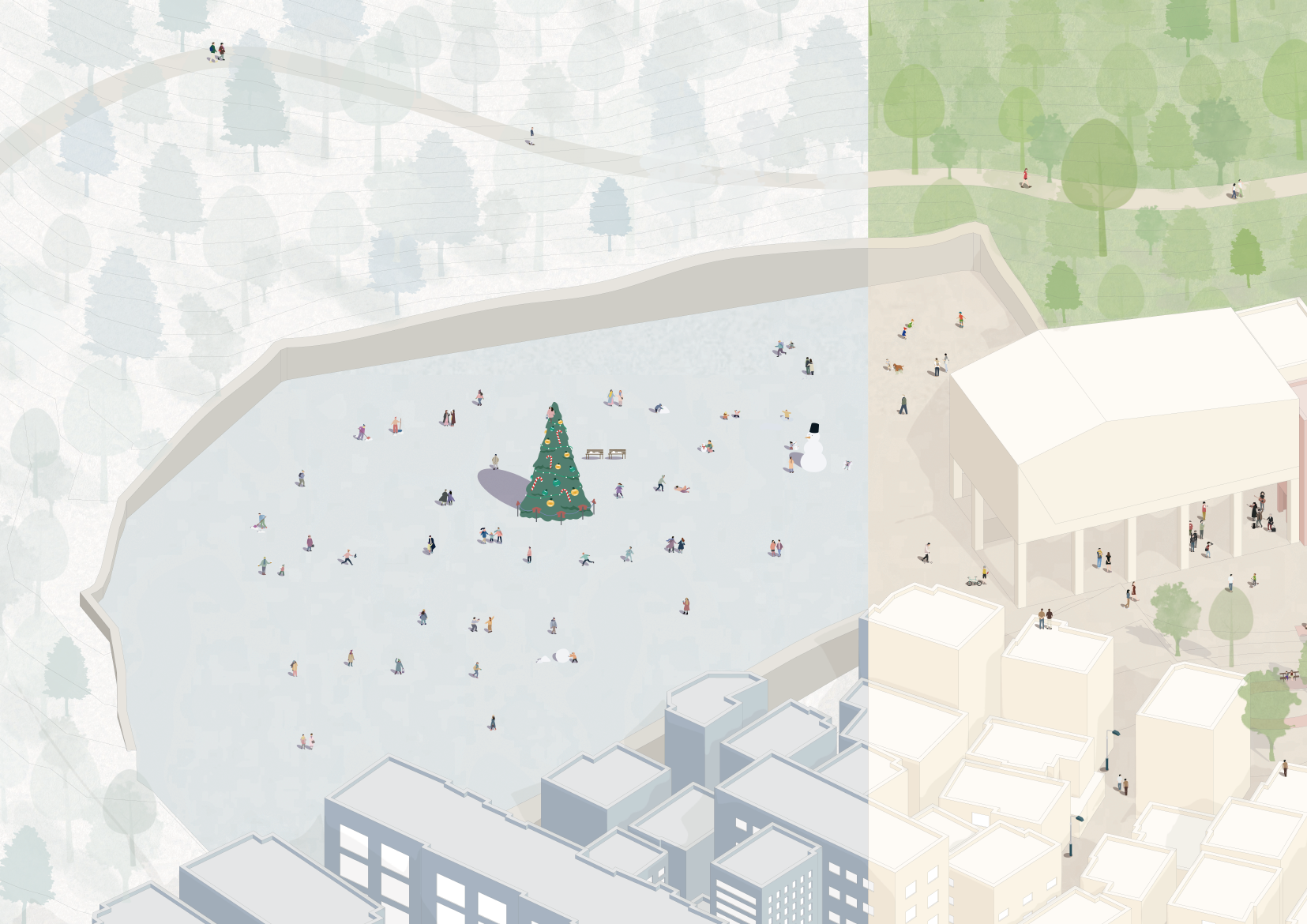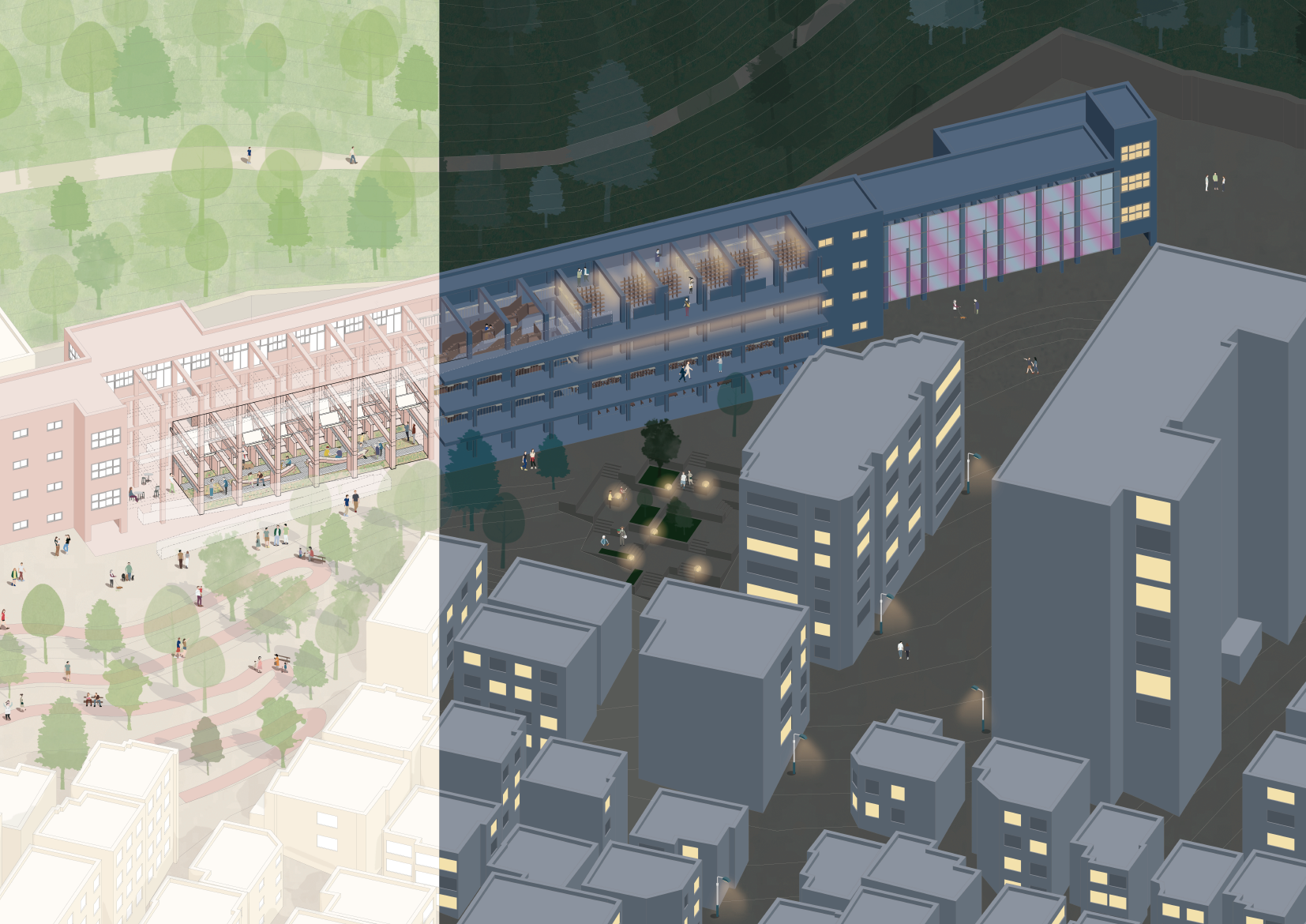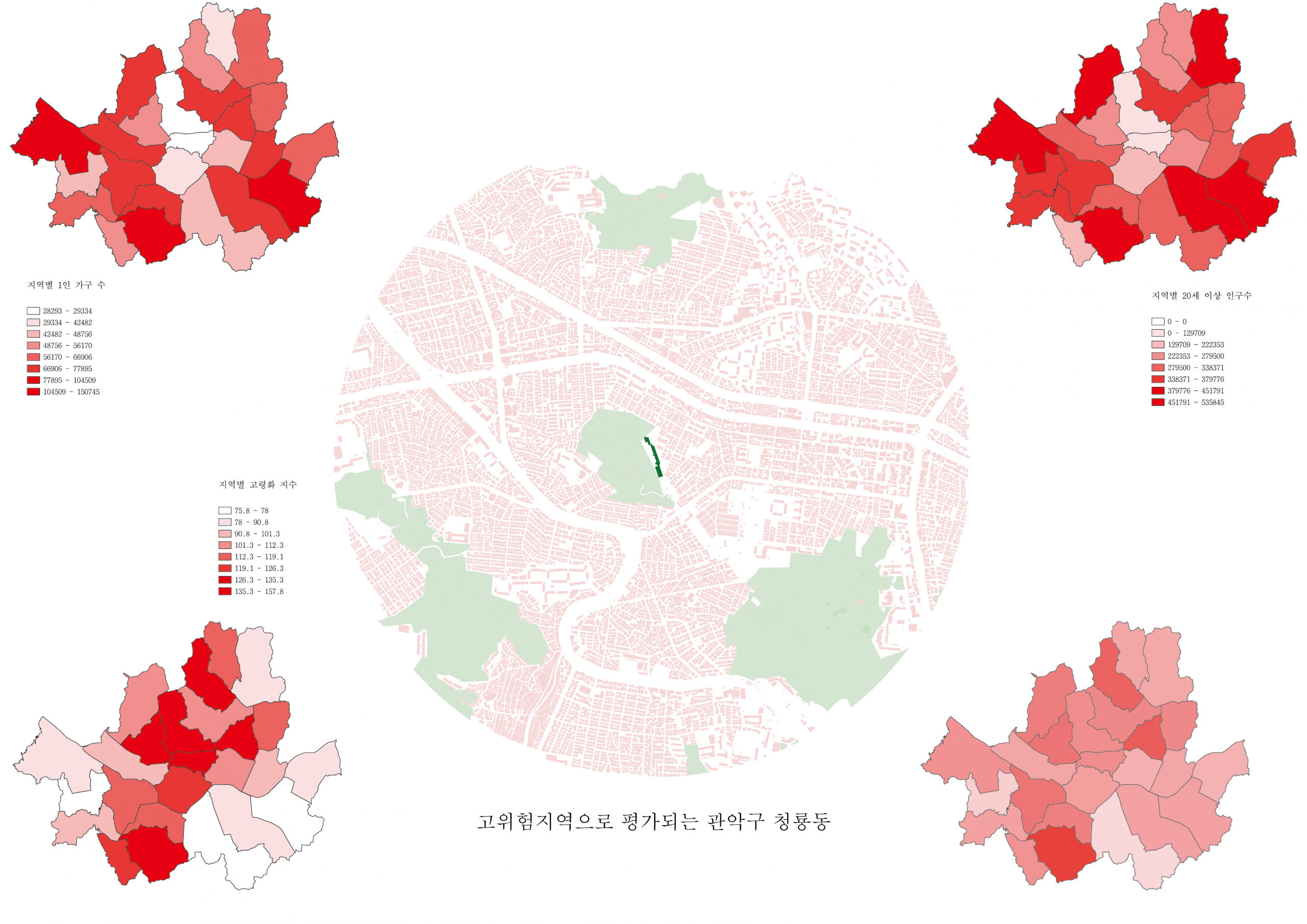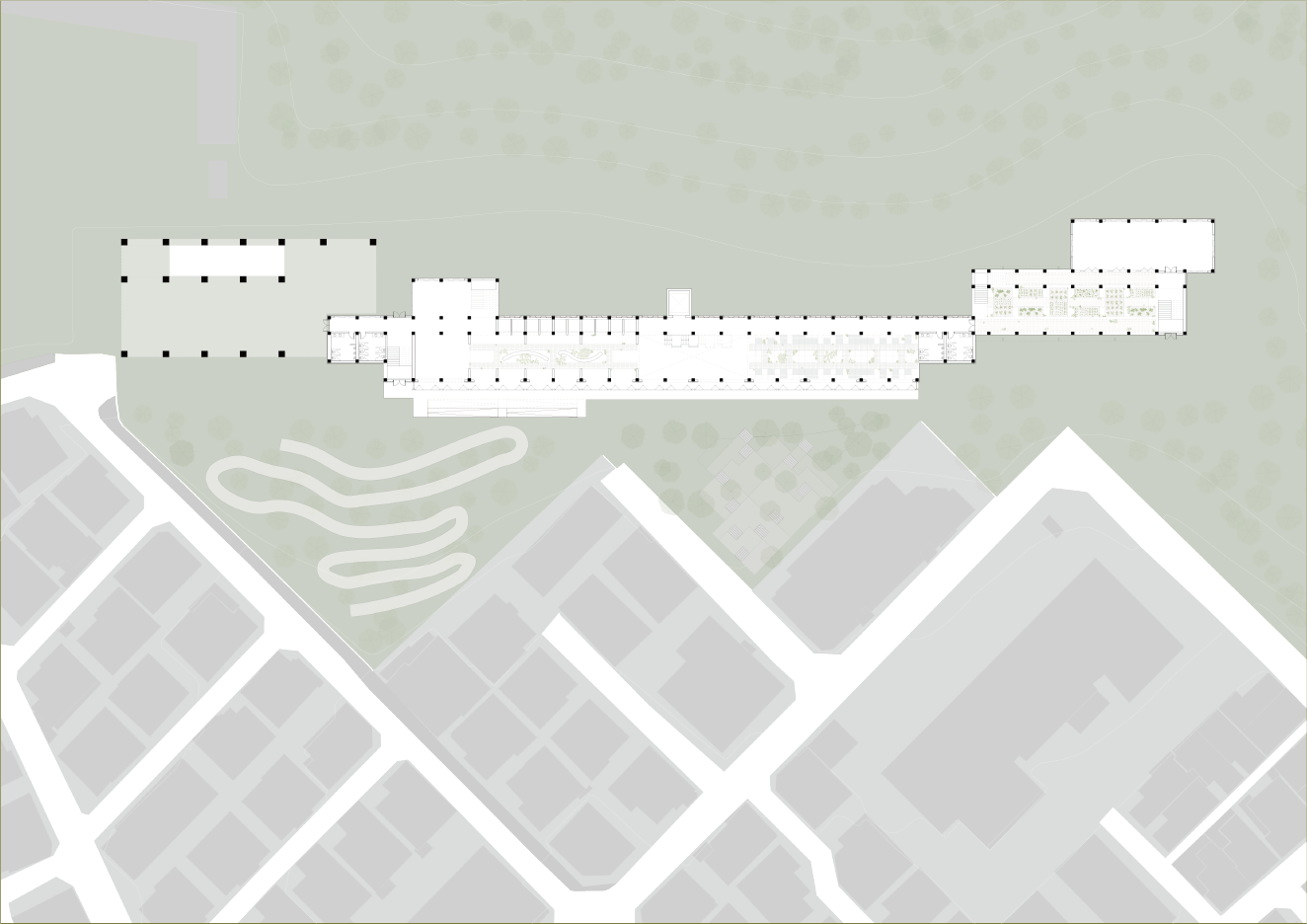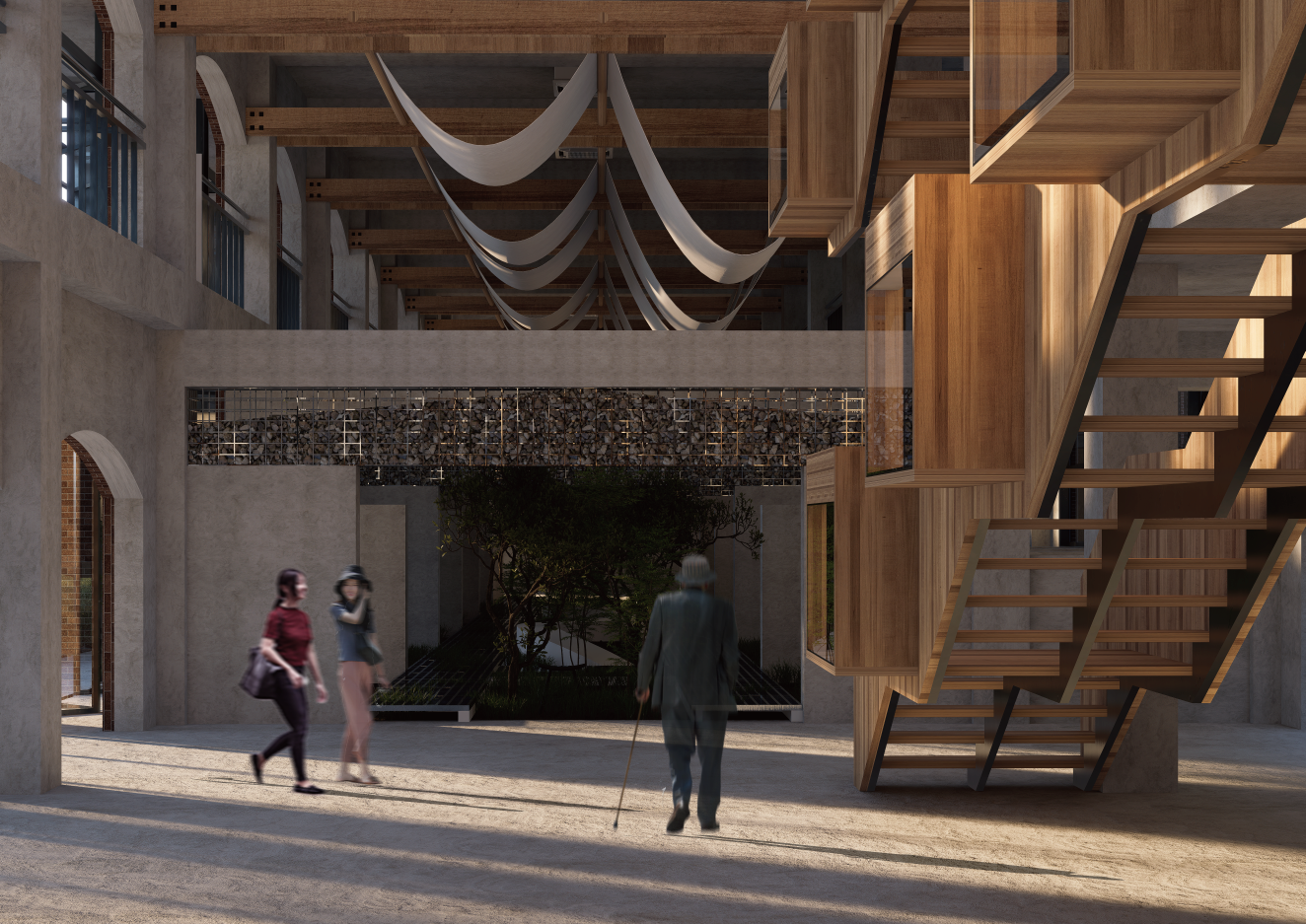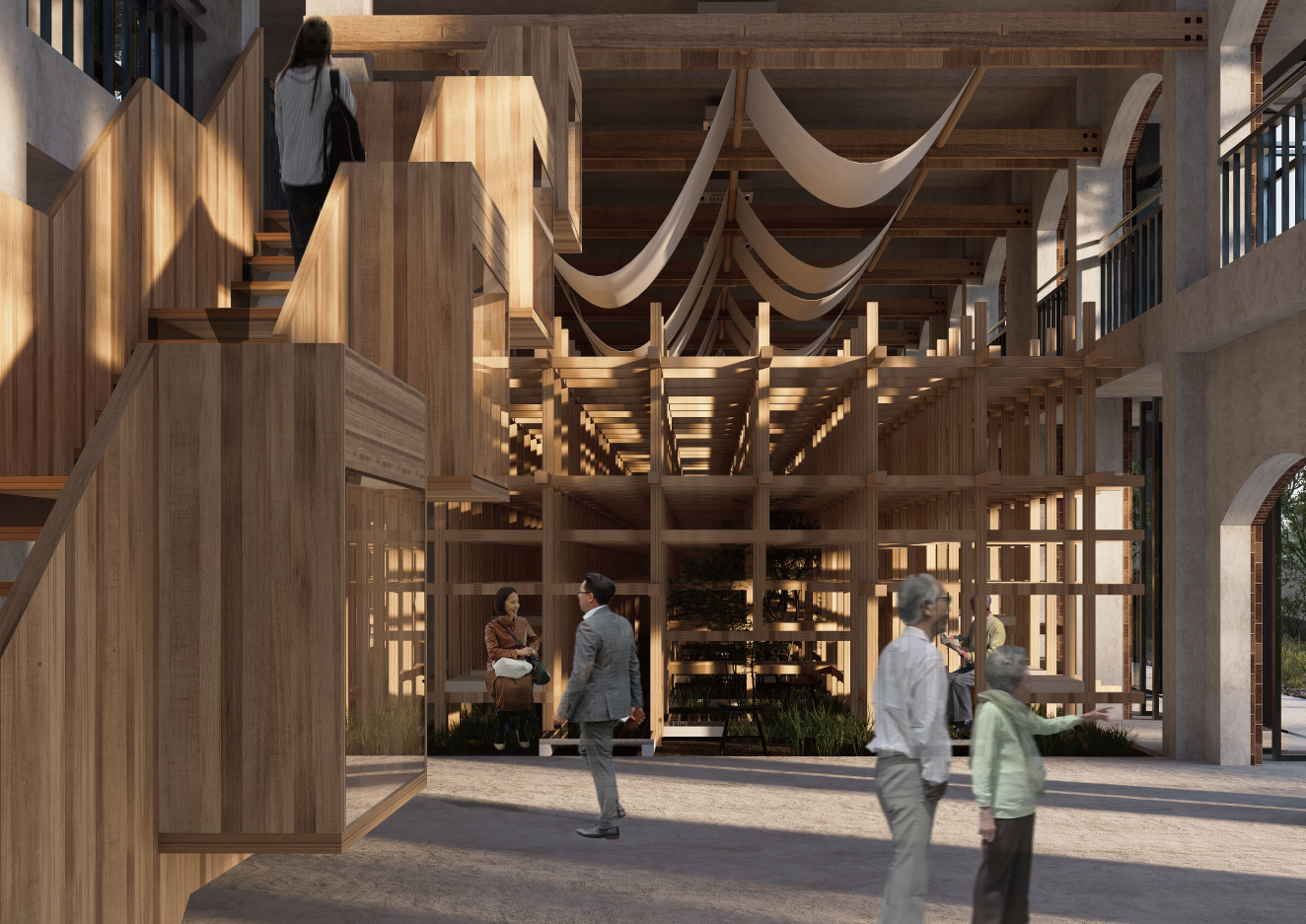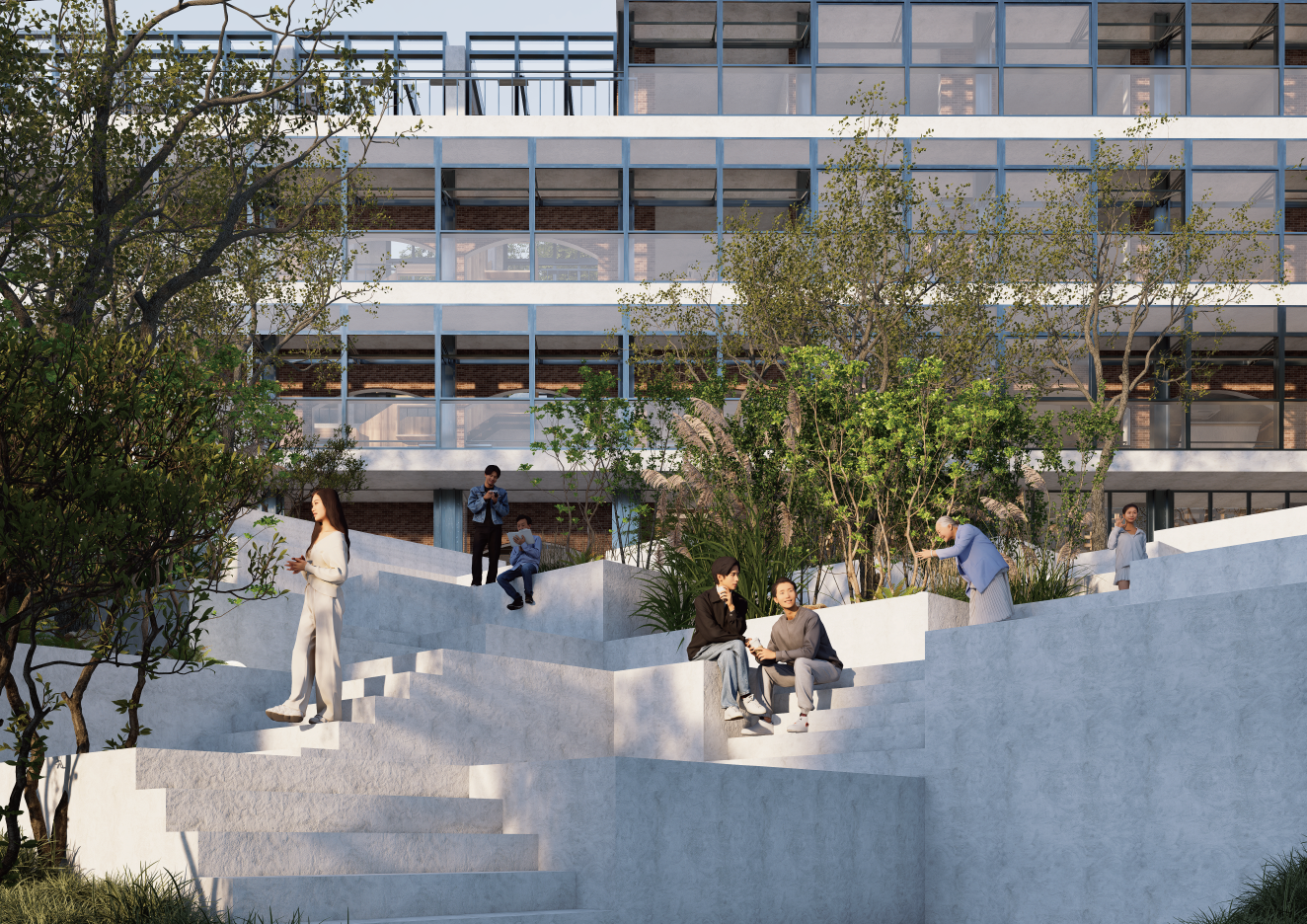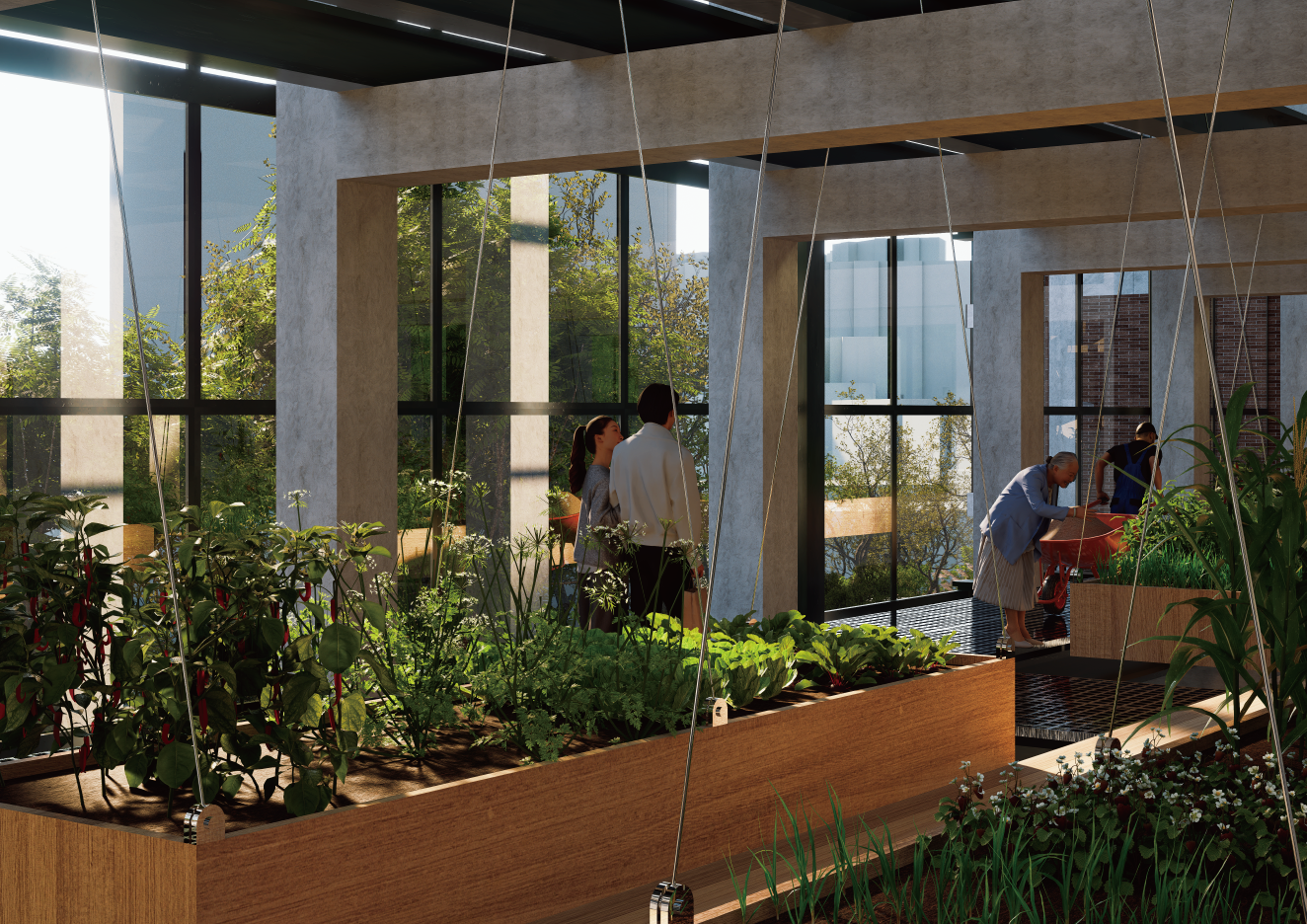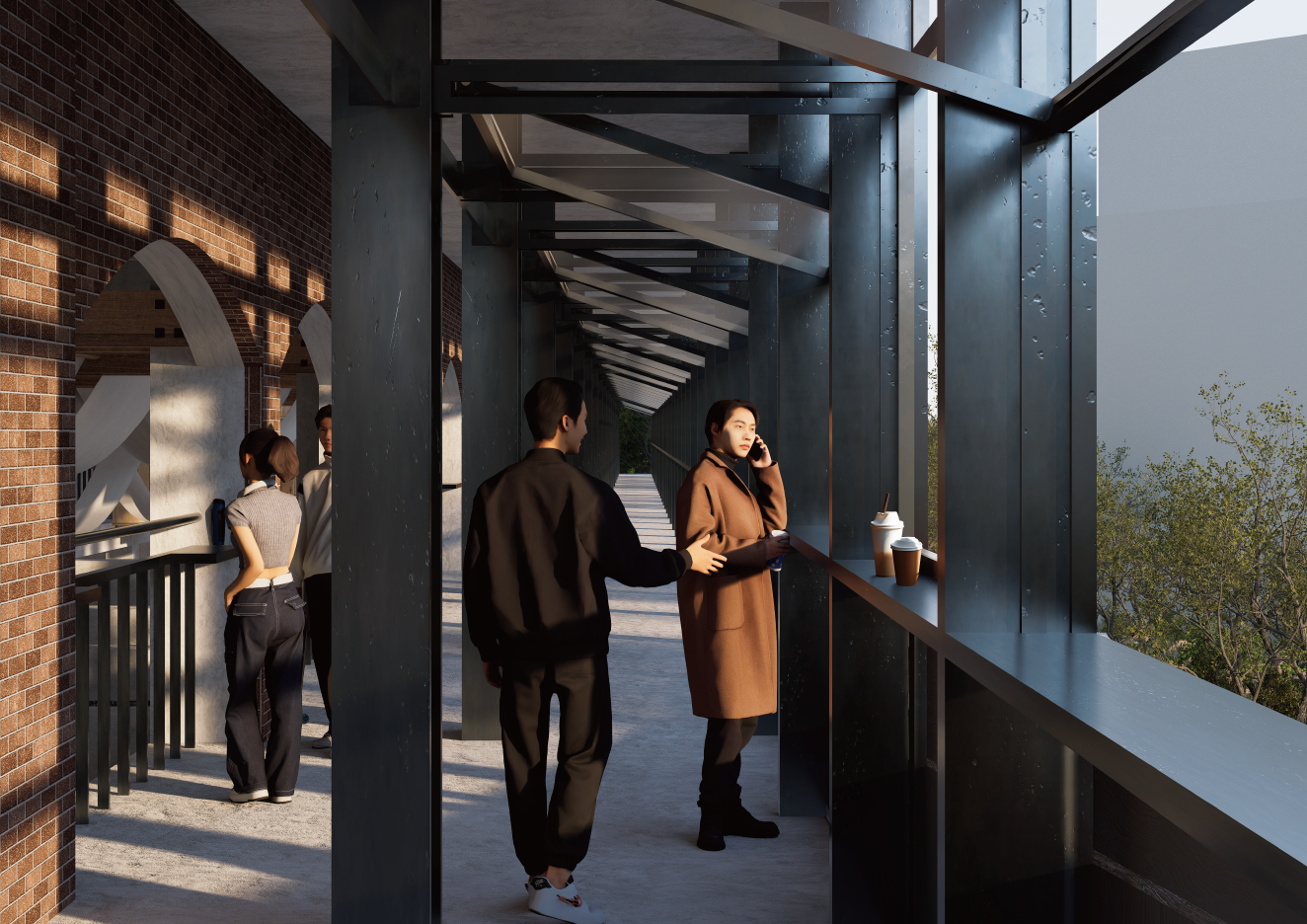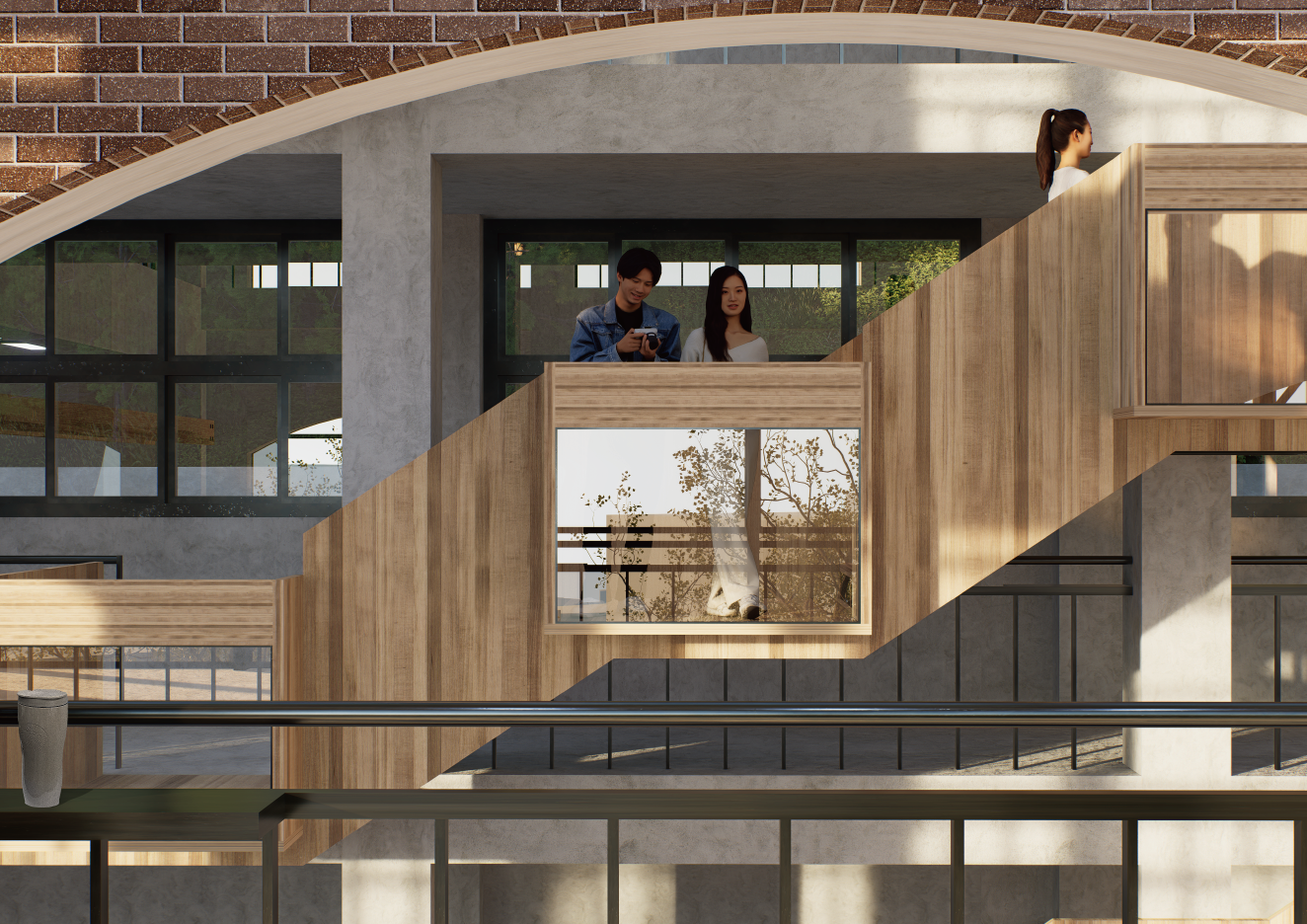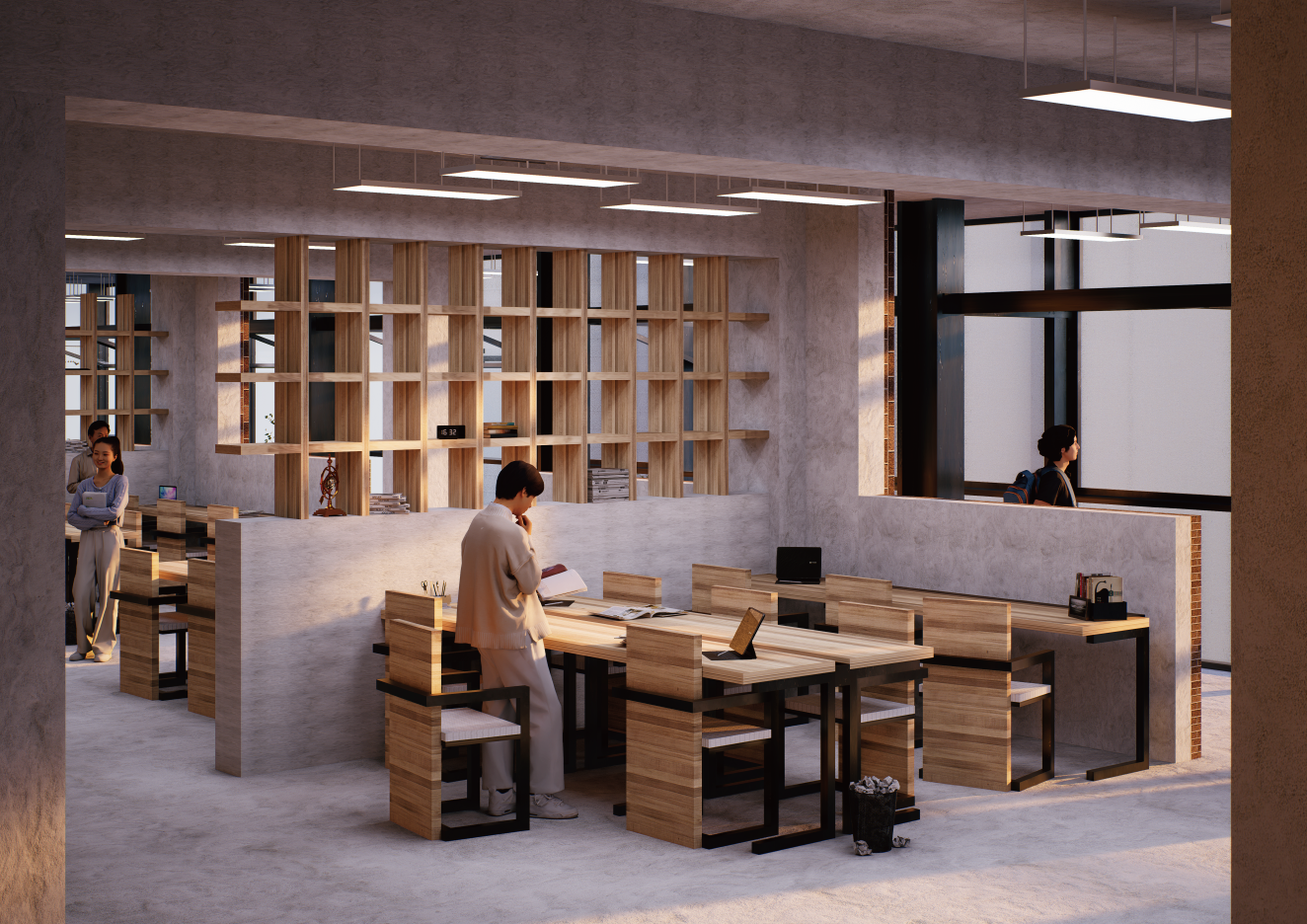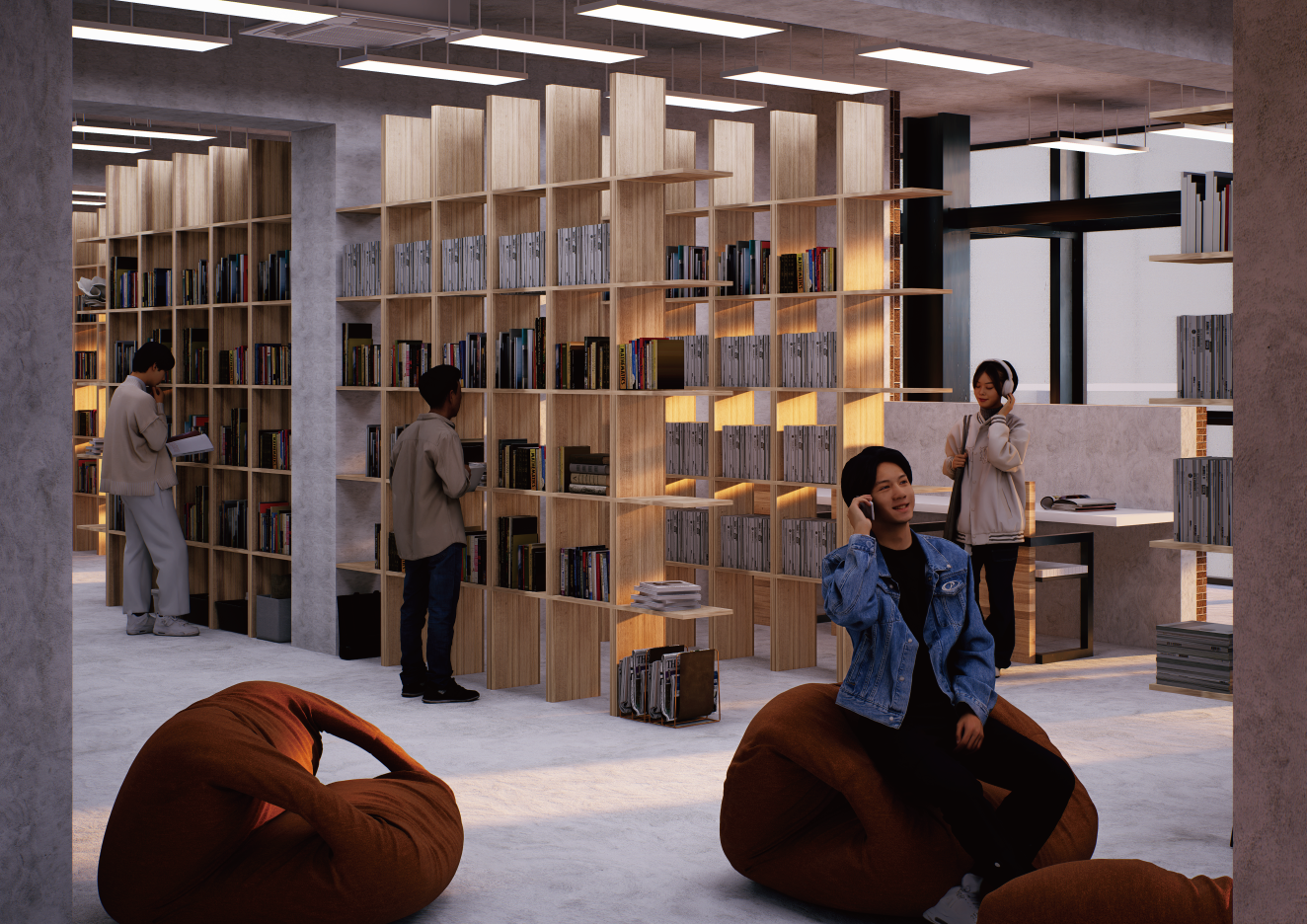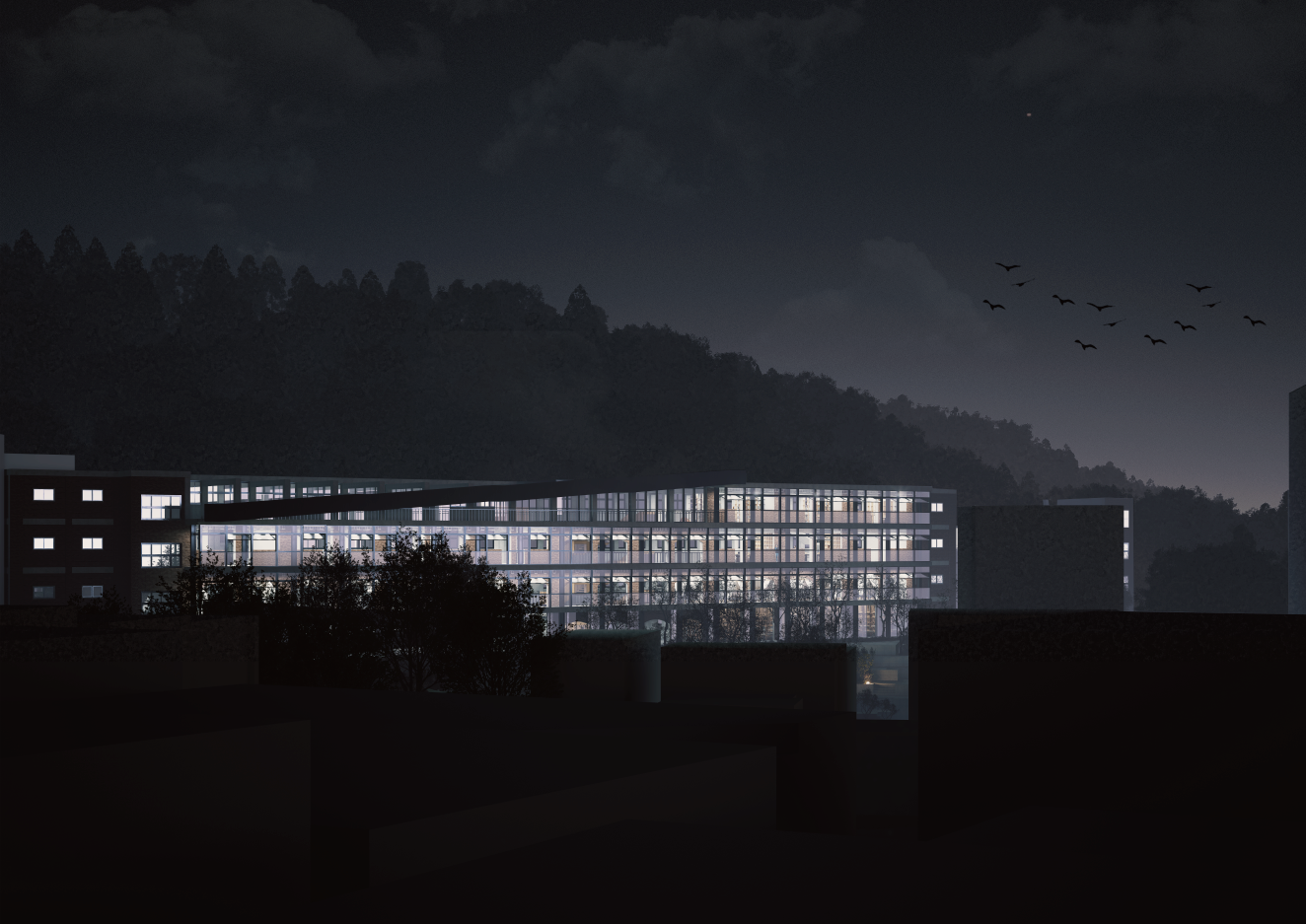이영재 _ 잔잔한 소통의 건축
오늘날 커뮤니티의 위기는 많은 사람들이 공감하는 현실적인 문제다. 공공건축 및 제도적 차원에서 다양한 노력이 이어지고 있음에도 불구하고, 고독사 사례는 매년 증가하고 있으며, 청년층의 외로움과 우울증 역시 우리 사회를 위협하는 직접적인 요인으로 떠오르고 있다. 이제는 새로운 접근 방식이 절실한 시점이다.
이상적인 커뮤니티란 무엇일까? 과거에는 옆집의 숟가락 개수까지 알고, 기쁜 일과 슬픈 일을 함께 나누던 공동체적 삶이 존재했다. 당시에는 공동체가 개인의 삶을 풍요롭게 만들었고, 그 안에서 사람들은 행복을 누릴 수 있었다. 하지만 이러한 과거의 커뮤니티는 오늘날의 1인 가구 중심의 삶과는 조화를 이루기 어렵다. ‘이웃사촌’이라는 단어조차 누군가에게는 부담스러운 관계로 느껴질 수 있으며, 이러한 관계에 대한 회피는 오히려 더 큰 소외로 이어질 수 있다.
현대인의 삶은 근본적으로 달라졌다. 주거 형태와 생활 방식의 변화는 그 나름의 타당한 이유가 있고, 이는 쉽게 되돌릴 수 없다. 그렇다면 우리는 이 변화된 개인화된 공간을 존중하면서도, 그 안에서 다시금 느슨하고 가벼운 관계로 연결될 수 있는 건축적 방법을 고민해야 한다.
폐교 공간의 가능성: 봉림중학교의 새로운 용도
서울 관악구 청룡동에 위치한 봉림중학교는 현재 폐교 위기에 처해 있다. 청소년 인구는 감소하고 있지만, 20대의 1인 가구와 고령층 인구가 이 지역을 채워가고 있다. 이 변화는 학교의 새로운 용도에 대한 필요성을 강하게 제기하며, 우리는 이에 대한 해답으로 현대 사회에 적합한 커뮤니티 시설을 제안한다.
기존의 커뮤니티 시설은 종종 특정 프로그램 중심으로 운영되어, 이에 관심이 없는 주민들은 또다시 소외되는 구조를 가진다. 봉림중학교 레노베이션 프로젝트는 이와 다른 방식으로 접근한다. 커뮤니티 센터를 목적지로 삼는 것이 아니라, **지역의 다양한 프로그램을 유기적으로 연결하는 '길'**로서 기능하게 한다.
이 길은 도시의 골목길처럼 누구나 자연스럽게 오갈 수 있으며, 특정 목적 없이도 거닐 수 있는 장소로 설계되었다. 주민들은 이 길 위에서 반복적으로 스쳐 지나가는 인연을 통해 서로의 존재를 인식하고, 부담스럽지 않은 방식으로 자신을 노출하며 소통할 수 있다.
길 위의 잔잔한 소통: 공간 구성의 전략
학교 내에는 다양한 주민들이 자발적으로 발걸음을 옮기도록 유도하는 요소들이 배치된다. 새롭게 도입되는 산책로, 텃밭, 도서관, 그리고 옹벽을 극복하기 위한 건축적 제스처는 이곳을 단순한 시설이 아닌 하나의 ‘공공적 경로’로 전환시킨다. 이 길을 따라 이동하는 과정에서 주민들은 자신도 모르게 다른 사람들과 연결되고, 이 공간에 자연스럽게 참여하게 된다.
이 ‘길’ 위에는 리듬감 있는 공간 배치를 통해 작고 큰 다양한 장소들이 마련되어 있다. 복도와 계단, 쉼터와 열린 마루 등은 주민들이 잠시 멈춰서 다른 사람의 존재를 인식할 수 있는 장소가 된다. 이런 공간들은 우연한 만남과 자연스러운 시선 교차를 가능하게 하고, 새로운 커뮤니티 감각을 형성하는 무대가 된다.
잔잔한 소통의 랜드마크 : 등대
봉립중학교는 언덕 위에 위치한 학교로, 청룡동의 대부분의 위치에서 파편화된 모습으로 보이게 된다. 청룡동은 해가 지면 급격히 어두워지는 동네로 안전한 등대와 같은 랜드마크가 필요하다고 생각하였다. 봉림중학교의 입면을 크게 바꾸지 않았기에 낮에는 주민들이 기억하는 학교와 모임의 장소의 역할을 하여 새로운 커뮤니티 시설이라는 거부감을 줄인다면, 밤에는 3~4층의 스터디 카페 및 도서관의 불빛이 청룡동을 밝혀 안전한고 기댈 수 있는 공간의 랜드마크, 즉 청룡동의 등대와 같은 역할을 하기를 기대한다.
혼자 살아도 혼자가 아닌 건축
이 프로젝트는 단순히 프로그램을 위한 공간을 만드는 것이 아니다. 이는 현대인의 삶의 방식에 대한 이해에서 출발하여, 소외되고 고립된 사람들에게도 부담 없이 다가갈 수 있는 관계의 공간, 잔잔한 소통의 건축을 제안하는 것이다. 봉림중학교는 이제, 혼자 살지만 결코 혼자가 아닌 삶, 스쳐 지나가며 인식되는 관계 속에서 서로를 둘러싸고 살아가는 공동체의 실험장이 된다.
Young Jae Lee
Architecture of Serene Interaction
The crisis of community is a pressing issue that resonates deeply with many today. Despite various efforts through public architecture and institutional policies, the number of solitary deaths continues to rise each year, and the loneliness and depression among younger generations pose an increasingly direct threat to society. At this point, a new approach is urgently needed.
Rethinking the Ideal Community
What does an ideal community look like? In the past, neighbors knew each other intimately—even down to how many spoons were in the next household. Joys and sorrows were shared, and community life enriched individual existence. However, such forms of communal life no longer align with today’s reality, where single-person households dominate. For some, even the word "neighbor" can feel burdensome, leading to further isolation.
Modern lifestyles have fundamentally changed. The shift in housing and living patterns occurred for valid reasons, and it cannot simply be reversed. Thus, we must respect the increasingly individualized spaces of contemporary life, while proposing architectural strategies that gently reconnect people through light, loose, and unforced relationships.
The Potential of an Abandoned School: A New Role for Bongnim Middle School
Located in Cheongnyong-dong, Gwanak-gu, Seoul, Bongnim Middle School is facing closure. As the youth population declines, the area is increasingly populated by single-person households in their 20s and the elderly. This demographic shift calls for a new function for the school, prompting us to propose a community facility suited to the contemporary urban condition.
Traditional community centers are often structured around fixed programs, which can alienate residents uninterested in those specific activities. In contrast, the Bongnim Middle School Renovation Project takes a different approach: rather than making the community center a destination, it functions as a path—a connector of diverse existing and new programs within the neighborhood.
This path is designed like a city alley—open and natural, inviting people to pass through even without a set goal. Along this route, residents encounter one another in subtle, recurring ways, allowing for moments of mutual recognition without pressure or obligation.
Quiet Encounters Along the Way: A Spatial Strategy
Within the school, various architectural elements encourage people to move and engage organically. Newly introduced walking paths, gardens, a library, and architectural gestures that address the site's retaining walls transform the school into a public corridor rather than a closed facility. As people move through this space, they inadvertently connect with one another and participate in a shared environment.
Along this "path," spaces of varying scale are rhythmically arranged—hallways, stairs, rest areas, and open verandas offer moments of pause. These spaces become stages for casual encounters and the crossing of glances, fostering a renewed sense of community grounded in everyday presence.
A Beacon of Soft Communication: The Lighthouse
Bongnim Middle School sits on a hill, and from many parts of Cheongnyong-dong, it appears fragmented and distant. The neighborhood becomes particularly dark after sunset, and the area needed a symbolic landmark—a safe and familiar lighthouse.
Without drastically altering the school’s exterior, the building remains recognizable as a place of memory and gathering during the day, reducing resistance to its new role. At night, the light from the study café and library on the third and fourth floors softly illuminates Cheongnyong-dong, offering a symbolic sense of safety and comfort. In this way, the renovated school becomes a new beacon for the community.
Architecture That Reminds You You're Not Alone
This project is not simply about creating a space for programs—it begins with a deep understanding of contemporary life. It proposes a form of architecture that offers gentle opportunities for connection, especially for those who are isolated or live alone.
Bongnim Middle School will become a quiet laboratory for collective living, where individuals may live alone but are never truly alone—surround
